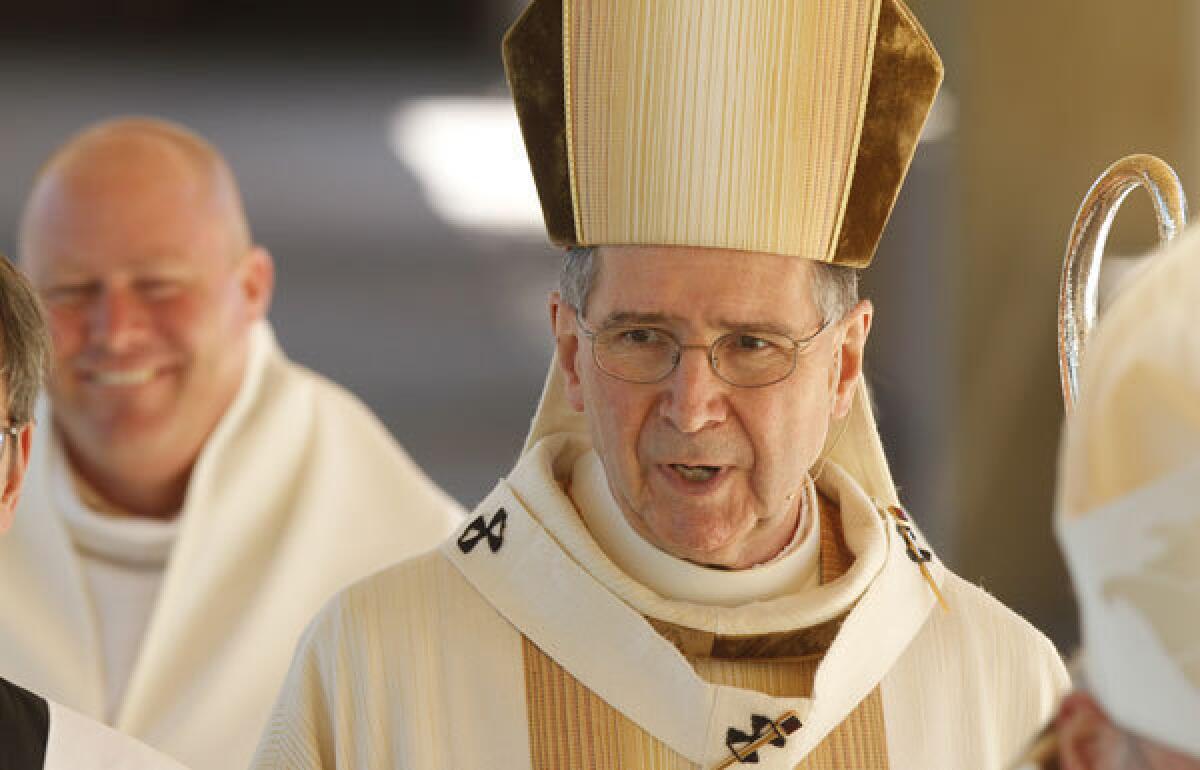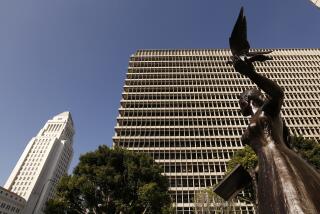Priest files will include key names

- Share via
The long-awaited release of 30,000 pages of internal church records was thrown into turmoil when attorneys for the Los Angeles archdiocese proposed, and then disavowed, a plan to turn over the documents with the names of Cardinal Roger Mahony and other church leaders handling cases of child abuse blacked out.
The church had agreed to make public the personnel files of 89 priests accused of sexually abusing children as part of a 2007 court settlement. Fourteen files were released last week in ongoing civil litigation. Those files showed Mahony and his chief advisor on abuse, Msgr. Thomas Curry, plotted to hide the sexual abuse of children from police in the 1980s.
Earlier this week, church lawyers submitted papers to the Los Angeles County Superior Court judge overseeing the release of the remaining, much larger batch of files proposing that the archdiocese be allowed to hand over the documents with the names of top church officials removed.
Attorneys for victims and the media criticized the legal maneuver, saying it flouted a previous ruling by Judge Emilie H. Elias that the public was entitled to the information.
“The Archdiocese simply disregarded the Court’s directive,” attorneys for The Times and the Associated Press wrote in papers filed Wednesday. “The result is to effectively continue to keep secret the roles of the individuals identified in those files, and to mask their knowledge of, or role in [abuse of children].”
By Wednesday afternoon, the church had rejected its own plan. An attorney for the archdiocese said in an interview that it was committed to including “the names, clearly legible, every one of them.”
It is now up to Elias to decide in what form the records will be made public. She has scheduled a conference call with attorneys Thursday morning.
In January, The Times and the Associated Press asked Elias to overrule a private mediator who had said the names of archdiocese employees should be redacted. Dickran Tevrizian, a retired judge hired to hammer out the details of the release, said the church had suffered enough criticism for the abuse scandal and its employees should not be subjected to the “guilt by association” that might accompany being named in the files.
Elias overturned Tevrizian’s decision, saying the public had a right to the identities of church officials who dealt with abusers “to understand how this happened and ... to watch for the future.” She said that between the privacy rights of the hierarchy and “the public’s right to know, there seems to be no comparison.”
“Those names ought to be included,” the judge told lawyers.
The lead attorney for the church balked at her ruling, saying the church had spent thousands of hours and “a fortune” redacting the files to comply with Tevrizian’s order.
“Every page has to be gone through. Every single redaction has to be examined afresh. It is going to delay this process by months,” the lawyer, J. Michael Hennigan, said.
During that hearing, Elias and lawyers discussed cover sheets as a potential way around the costly process of restoring individual redactions on thousands of pieces of paper. The judge told the attorneys to draft an order for her to sign that laid out a specific procedure.
The order the church lawyers submitted to the judge Monday proposed the archdiocese be permitted to address the judge’s ruling with a cover sheet on each priest’s file. It would list the names of those in charge in the church when the records were created: the archbishop, his vicar of clergy, the head of a New Mexico treatment center for pedophile priests and “the names of Pastors, if applicable, who were asked to oversee the Priest’s interaction with children.”
Attorneys for alleged victims said the plan ignored the judge’s ruling and would provide no public accountability for the hierarchy. The church redacted the titles of top officials in addition to their names. Even if the titles were restored, “many of the documents don’t list a title. They just give a name,” said attorney Anthony De Marco. “Our fear is you will have no clue from reading the letter who is being referred to.”
The files released last week were not redacted. They suggest that it would be nearly impossible to decipher which official played what role with names and titles blacked out. In one 1989 letter criticizing the church’s failure to help a victim of Msgr. Peter Garcia, four different church leaders’ names were mentioned in a single paragraph.
The church leaders referenced, whose names would have been removed, included Mahony, Curry and Juan Arzube, a regional bishop.
In a phone conversation Wednesday afternoon, Hennigan insisted that the church would ensure that top officials were easily identifiable in the files. Asked if he still planned to use generic cover sheets for each priest’s records, Hennigan was silent for several seconds.
“I’m thinking, I’m thinking,” he explained and then said, “We are going to unredact every required name.”
He said the process would take days from the time the judge signs an order rather than the months he had predicted.
More to Read
Sign up for Essential California
The most important California stories and recommendations in your inbox every morning.
You may occasionally receive promotional content from the Los Angeles Times.












